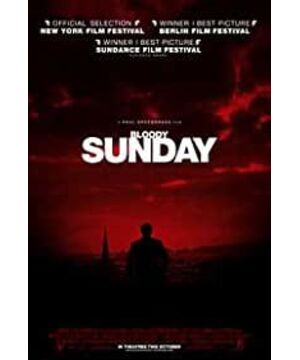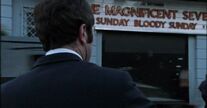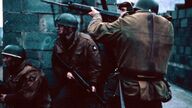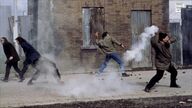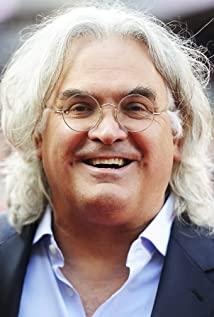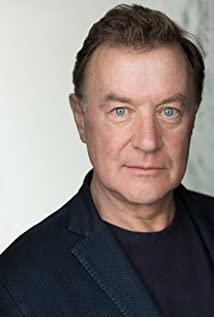We will not rest until justice is done, that was the cry of a relative of a victim at the end of the movie "Bloody Sunday." Forty-seven years later, on March 14, 2019, justice finally arrived when a former paratrooper was formally charged with murder in the "Bloody Sunday" incident in Delhi.
The scene on the day of the recovery event is embarrassing. Originally a peaceful civil rights parade, because it was used by forces from all sides (British paratroopers eager for revenge; Irish Republican Army fanned the flames, fishermen benefited; young people have more than blood, but lack rationality; the organizers of the parade have more than enough heart but not enough power. ), resulting in a tragedy. Director Paul Greengrass used a rough documentary technique with film texture to fully present the incident, the story is compact and smooth, and the tension of the historical scene is well created.
The map above details the parade route of the day's events, the route of the British army, and the locations of those who were shot and wounded. 1. At 3:45 p.m., the main force of the parade turned from William Street to Roswell Street and held a rally at Freederry Corner. Part of the crowd left the parade and continued on to City Hall, where the British army set up roadblock No. 14. 2. British soldiers claim to have been attacked on William Street. 3. At 4:10 pm, soldiers opened fire on marchers. They drove down Roswell Street in armoured vehicles and then moved between apartment buildings on foot. 4. The parade crowd was frightened and fled in all directions. At about 4:40, the shooting stopped, 13 people were killed, 1 was seriously injured, and 13 others were injured. 5. "Soldier F" was charged with murder.
After the "Bloody Sunday" incident, re-investigations revolved around the government's cover-up, whitewashing, performance of merit, revenge by anti-British factions, and continuous complaints from the victims' families. 1. On January 30, 1972, the Northern Ireland Civil Rights Association held a march in the Derry Bogsay area. The British Royal Paratroopers opened fire on the demonstrators, killing 13 people and a 14th person later died of serious injuries. 2. On February 1, 1972, Prime Minister Edward Heath appointed Chief Justice Sir Widgery to investigate the incident known as "Bloody Sunday" and submit an investigative report. A car bomb was detonated at Aldershot Barracks, the headquarters of the regiment, killing seven people, mostly female cleaners. 4. On April 18, 1972, Sir Widgery submitted his investigative report, which was dismissed by many as "whitewashing" the British government. 5. On January 1, 1973, Colonel Drake Wilford, commander of the Royal Parachute Regiment, was awarded the Order of the British Empire (OBE). 6. On January 29, 1998, Prime Minister Tony Blair of the Labour government announced a new investigation into the incident under pressure from relatives of the deceased. 7. The Savile investigation began on April 3, 1998, and lasted 12 years, costing hundreds of millions of pounds. 8. On June 15, 2010, the final report of the Savile investigation was released. "In our view, we have found no evidence to justify the shooting by soldiers," the report said. Conservative Prime Minister David Cameron apologised on behalf of the government, saying the soldiers' behaviour was "neither justified nor reasonable". 9. In July 2012, the Northern Ireland Police Service launched a murder investigation into the victims of "Bloody Sunday", involving a total of 30 detectives. 10. In December 2016, the documents were handed to the Public Prosecution Service of Northern Ireland to decide whether to prosecute the paratroopers. 11. On March 14, 2019, prosecutors announced that they had decided to indict only one former paratrooper for the murders of James Wray and William Mckinney, and the attempted murders of Joseph Friel, Michael Quinn, Joe Mahon and Patrick O'Donnell.
To sum up, it can be seen that the relatives of the victims of the incident have never given up finding the truth and seeking justice. The British government also dared to face the black hole of history and publicly apologize.
The road to justice is dangerous and long, spanning nearly half a century, but it has finally arrived, although it is long overdue.
View more about Bloody Sunday reviews


